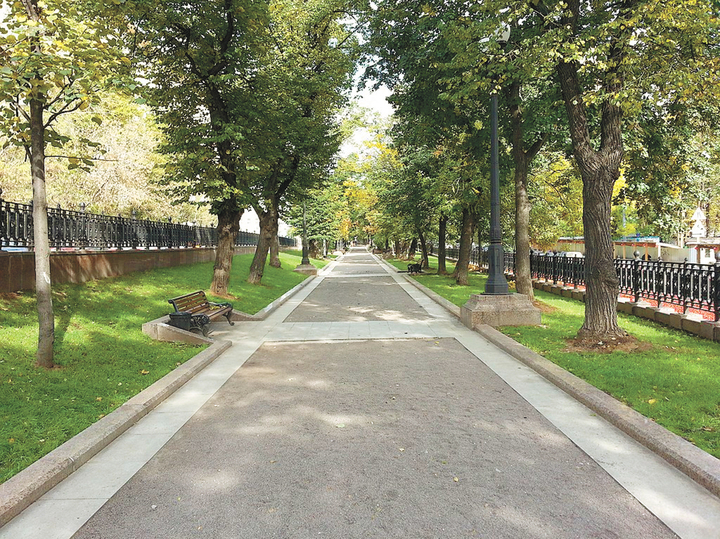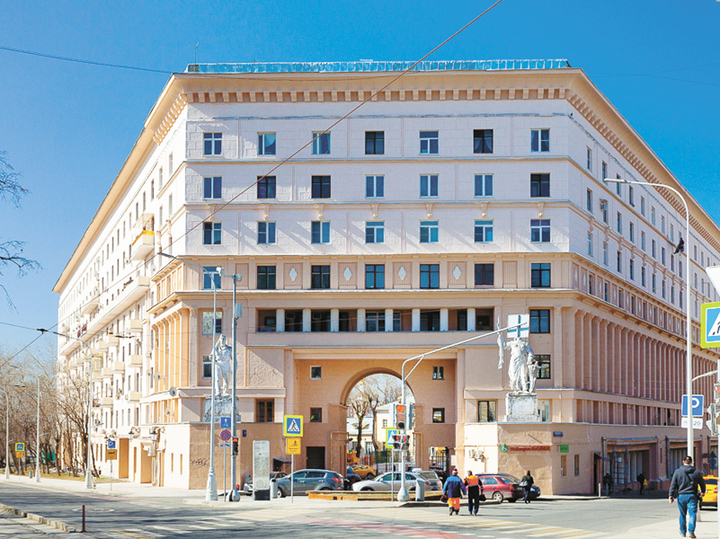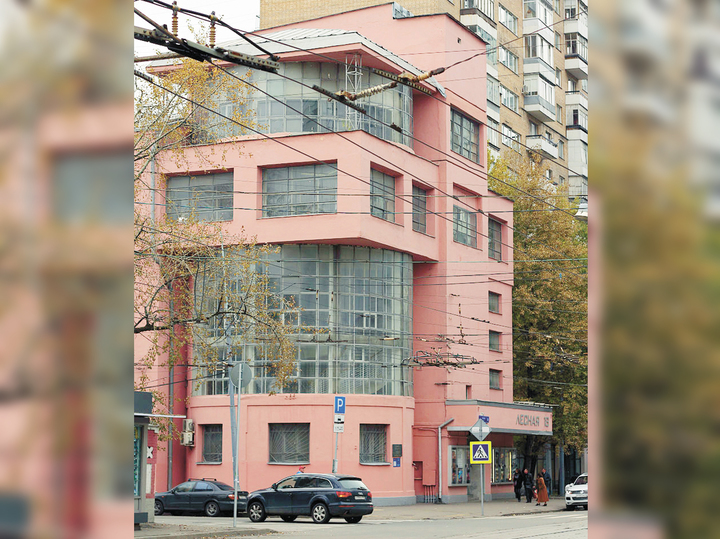The house of the husband of Kutuzov’s sister: Tsarist Major General Khitrovo
[ad_1]
The smallest of ten boulevards, only 400 meters long, is Yauzsky. It got its name from the Yauza Gates of the White City, a fortress wall around the capital in the 16th-18th centuries. The name of the gate was given by the Yauza River, to which the capital owes a lot, as well as the Moscow River, because the city was born at their intersection.
The wall of the White City near the Yauza was demolished earlier than on the site of other boulevards in 1760. The white stones of the destroyed fortress, which had lost its significance, were needed to build the walls of the Orphanage for foundlings and orphans. This remarkable institution from the time of Catherine II has been preserved and today is striking in size.
Neither the Yauza Gates nor the walls of the White City are long gone. Yauzsky Boulevard was laid on the site of the fortress wall much later than others, in 1824. Nothing that was before the invasion of Napoleon on the sides of the walls has been preserved.
The Russian army retreated through the Yauza Gate in 1812, all the buildings along the road burned down in the fire of a colossal fire, with the exception of the Orphanage, which was saved, and several wooden buildings far from the river, on top of a hill.
The history of this estate began in the 17th century. It was owned by the stolnik Alexei Golovin, close to the king, he was entrusted to serve his meals. The son of the stolnik boyar Fedor Golovin in the reign of Peter I became his closest associate and friend. Following the example of the king, he was the first to shave off his beard, was in charge of foreign affairs, and participated in the campaigns of the sovereign. He received the highest rank in the fleet – Admiral General. He was the first in Russia to be elevated to the dignity of a count by the emperor of the Holy Roman Empire, which existed in Europe until the beginning of the 19th century.
In the place of the choir burned down in the middle of the 18th century, the widow of Prince Shcherbatov erected two-story stone chambers. At the end of the century they were rebuilt in the style of classicism.
The house was bought by retired Major General Nikolai Khitrovo, who was married to the sister of Field Marshal Kutuzov. In the past, a military officer was part of the inner circle of the reformer Speransky, an associate of Alexander I. (In Leo Tolstoy’s novel War and Peace, Prince Andrei Bolkonsky was in Speransky’s circle of friends.)
Speransky, on the slander of the courtiers, was arrested and exiled to Perm. Khitrovo was exiled to Vyatka for being close to him, then allowed to live on his estate near Tarusa under police supervision. A year later, Khitrovo was forgiven in honor of the merits of the father-in-law. But he did not return to Khitrovo, who had risen again after disgrace, and did not return to Khitrovo’s politics.

The general rebuilt his house in the Empire style with a six-columned portico. The yards of two fire victims, who had been unable to build up their land and pay taxes for it since 1812, stretched out in front of him, he bought at an auction. On the territory that became his property, he planned a square and donated it to the city. He built shopping arcades on the square for the sale of meat and herbs, a farmstead where visitors could stay. The market was called Khitrovsky, in common parlance Khitrovka, which was notorious.
The last owner of the mansion, the childless colonel of the guard Orlov, bequeathed it to the city for the poor. It opened the “Oryol Hospital of the Moscow Committee for the Care of the Poor for indigent patients” with an operating room for 5 beds and a pharmacy for free medicines. Here, the inhabitants of Khitrovka’s bunkhouses were treated and fed in a free canteen.
Five years after the revolution, paramedic courses were opened in the house of the hospital, which became a school, a medical school named after Clara Zetkin. The name of the comrade-in-arms of Lenin, the leader of the German Communist Party, to this day bears the college named after Clara Zetkin.
You can see the preserved Empire style mansion by entering the gates of the largest building on Yauzsky Boulevard. And this eight-story house, whose number is 2, is considered, like the mansion of General Khitrovo, an architectural monument.
This residential building of the Military Engineering Academy was designed by the architect Ilya Golosov, a classic of constructivism, who built a lot in different cities. In Moscow, he is known for the Zuev House of Culture on Lesnaya Street.
Golosov began to design and build a house for the command staff of the Red Army when constructivism dominated the world and Soviet Russia, with flat walls of buildings. But Stalin, who came to power and put an end to the opposition of the old Bolsheviks, categorically did not like constructivism in the “model socialist city” conceived by the Bolshevik party. In the memoirs of Khrushchev, who led the city under Kaganovich before the war, there is an episode that sheds light on this circumstance.

“I remember once, when we, several people, were inspecting a new complex being built around the Moscow City Council, Kaganovich pointed to the Marx-Engels Institute and asked:
Who the hell designed this monster?
The flat, squat gray block of the Marx-Engels Institute (and Lenin, whose name the memoirist did not name. – L.K.) really was an extremely gloomy building.
The fate of constructivism in Moscow and the country was decided. Ilya Golosov had to transform constructivism into “socialist realism” on the go, therefore, as art historians write, “rustication, semi-columns and other characteristic features of the Stalinist Empire style appear on the facades; however, so far there are not so many of them as in houses built later.
A monumental cornice, typical of classicism, hangs from the roof above the floors of the house. Ridiculous statues of workers who have become “masters of the earth” are installed in front of the huge arched gate. On one side, a woman with a sheaf and a rifle. On the other, a man with a jackhammer and a book.
* * *
According to Dmitry Bondarenko, many military leaders who proved themselves during the Great Patriotic War lived in the house of the Military Engineering Academy. I will name three of them.
In Moscow, in the Strogino district, there is Marshal Proshlyakov Street. His fate is typical for marshals and generals of the Red Army. Alexei was born before the revolution, in a village, in a poor family, near Ryazan, and graduated from a teacher’s seminary that trained elementary school teachers. But he didn’t go to school. In the Red Army, he began serving as a clerk, briefly sat at the headquarters with papers, transferred to an engineering battalion and since then served in the engineering troops – he built crossings, dug trenches, trenches, anti-tank ditches, built minefields that prevented the Germans from taking Moscow and Tula.
General Proshlyakov and Stalingrad defended, from then until the Victory he served under the command of the great Rokossovsky: he participated in the crossing of the Dnieper, the Belarusian operation, the battle for Berlin. In the book Soldier’s Duty, the marshal recalled:
“You could rely on the energy and initiative of this general. Modest, even somewhat shy, he knew how to show both will and unbending determination. Deep knowledge and rich practical experience allowed him to cope with the most complex tasks. A caring and demanding commander, a wonderful comrade, he enjoyed universal love. It was a pleasure to work with him.”
The first award during the war – the Order of the Red Banner – was awarded to General Proshlyakov a year and a half after it began. The spring of 1945 became triumphant and inexplicable for historians: on April 6, he was awarded the Order of Lenin. After 24 days, they are awarded the same order for the second time. And a month later, on May 29, he receives the third Order of Lenin and the Gold Star of the Hero of the Soviet Union. I believe Stalin considered even two Orders of Lenin insufficient for the award of a successful commander of the entire Patriotic War of the engineer troops of the armies and fronts.
The encyclopedia “Faces of Moscow” does not contain a biography of Guy Tumanyan, although he lived on Yauzsky Boulevard for twenty years since 1937, was the brother of Ashkhen, the wife of Anastas Mikoyan, a member of the Politburo, an ally of Stalin, who escaped the punishment of the leader and the humiliation of Khrushchev.
(I knew Eleonora Mikoyan, the wife of Ashkhen’s son, General Stepan Mikoyan, Hero of the Soviet Union, test pilot. Eleonora Petrovna edited my books about Moscow in Detgiz and surprised me with her knowledge of the city. at the playground, which was done with one call from Moskovskaya Pravda. Under the pretext of repairs, Stepan and Eleonora were evicted from the House on the embankment. I visited their apartment far from the center, where they moved and brought with them a collection of gramophone records that occupied the shelves the entire wall of the room from floor to ceiling.There Eleonora Petrovna presented me with a collection of newspaper and magazine clippings about Moscow, which she had collected for many years.)
Gai Tumanyan has not been forgotten on the Internet. They write that in his youth, at the age of 16, he helped Kamo transfer money from Tiflis to Baku – the same ones that the famous militant of the Bolshevik Party and his accomplices obtained by throwing bombs into the treasury carriage with bags of money. They were transported from the post office under the guard of soldiers with rifles and a convoy of Cossacks who died from the explosions. From Baku over 300 thousand rubles (corresponding now to about 3 million dollars) were ultimately transferred from Russia abroad, to Lenin.

Young Guy became a member of the Bolshevik Party, even when it was called the RSDLP, two months before the October Revolution. From the Caucasus, after the Civil War, he came to Moscow, and after studying at the Communist University and at the eastern faculty of the Military Academy of the Red Army, he ended up in the “hot spot”, which was then Harbin, at the disposal of the Intelligence Directorate of the Red Army Headquarters. There he served in the consulate as the head of the special department “A” (active intelligence, sabotage intelligence service). He held the rank of brigadier commissar.
After the “hot spot” in the Far East, he ended up in a “hot spot” in the West. In civil war-torn Spain, the adviser to the Republican army was known under the pseudonyms Andrei and Captain Miguel. He also participated in the “unfamous” Finnish War – he earned the order and the title of divisional commissar.
During the Great Patriotic War, this “political” rank was equated with the rank of major general. Guy Tumanyan formed the first partisan detachments of Belarus, he himself commanded a partisan regiment. On various fronts, he was a member of the Military Councils of tank corps and armies. Surrounded the 6th German army near Stalingrad, participated in the Korsun-Shevchenko operation. He took Romania, Hungary, Austria, liberated Czechoslovakia. He met the victory as a lieutenant general. His last battle happened on the Trans-Baikal Front in Japan.
It’s like that. But for what he received before, during the war and after it 6 (six!) Orders of the Red Banner – awards established “for special courage, dedication and courage” – I did not know. No one talks about the exploits of the former head of the special department “A”, divisional commissar and general Gai Tumanyan. It only remains for me to say in the words of the poet: “The centuries will finish, apparently, an unfinished portrait.”
[ad_2]
Source link






